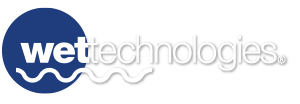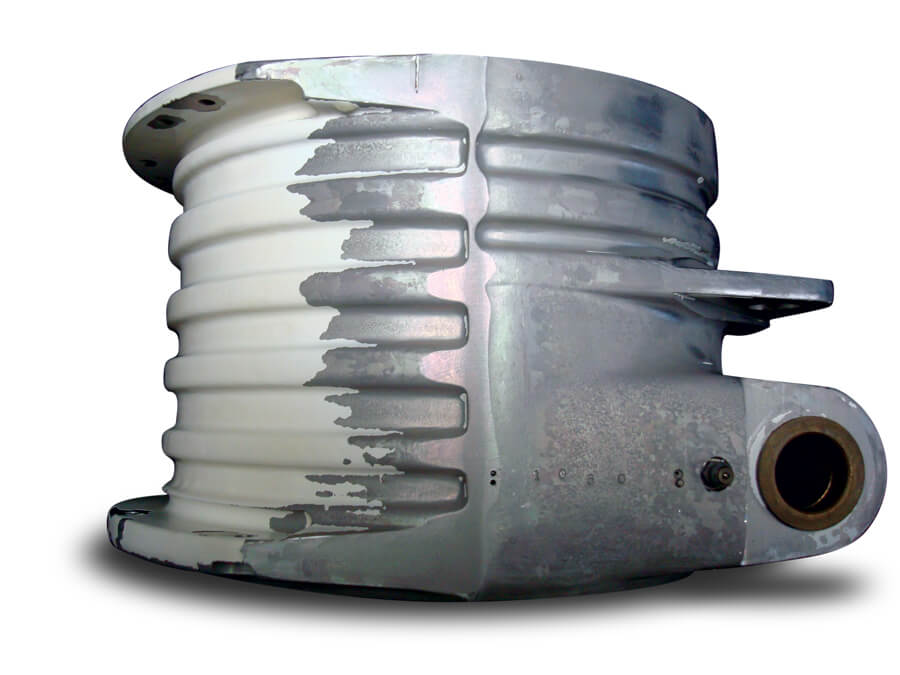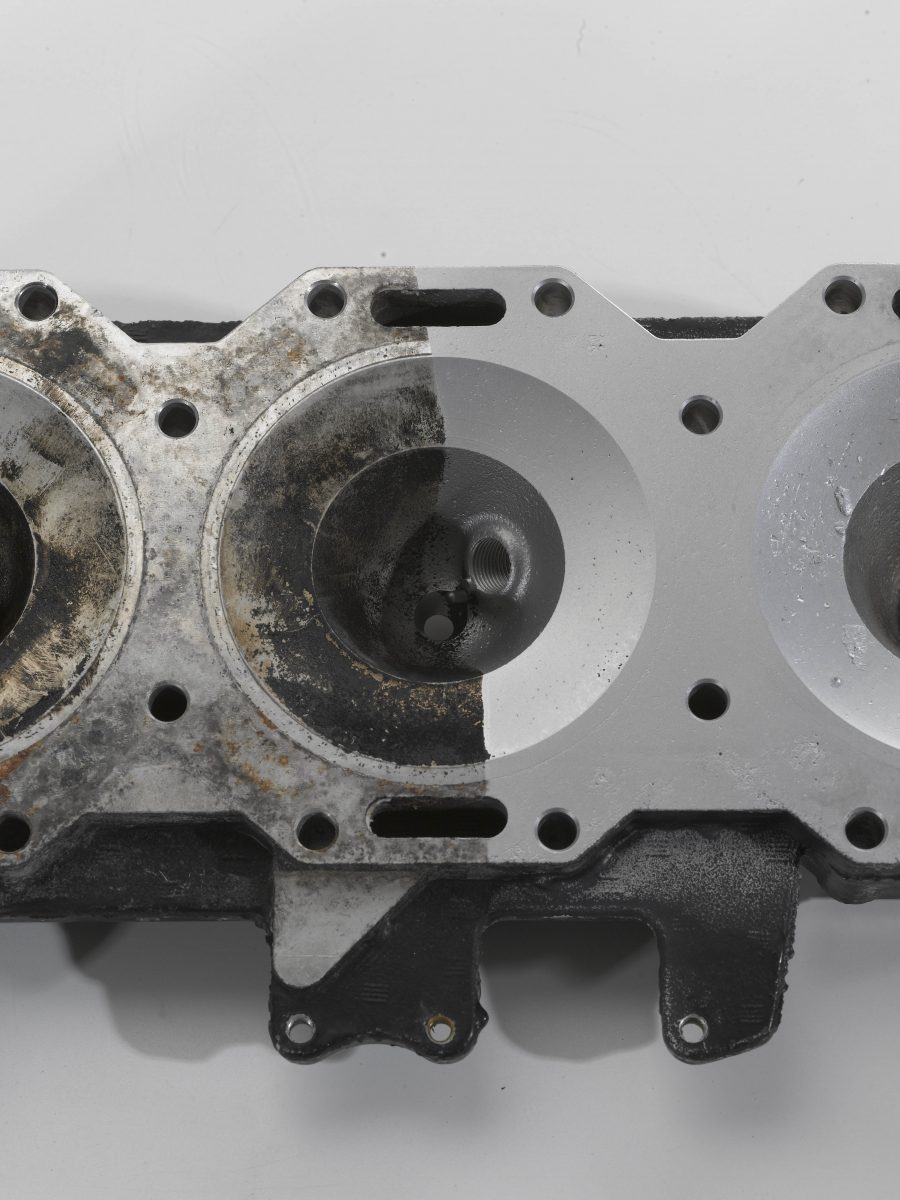You may already know that wet blasting is a clean, safe way to remove grease and paint for MRO, MX, and Reman applications. Toxic coatings are safely removed and contained in our closed-loop systems—eliminating airborne dust and associated hazards—and the need for PPE. In addition to the safety and sustainability of the Wet Tech Process, precision is an important advantage. Wet Blasting can be completely non-destructive, maintaining critical tolerances and profiles. Even achieving selective removal of unwanted coatings, with the right system and appropriate media.
While several of our Reman clients have had excellent results with high-pressure systems, which don’t require added media, there are two slurry options that work well for non-destructive parts cleaning, degreasing, and paint removal.
Baking Soda is ideal for selective paint removal.
Sodium bicarbonate is the softest blasting media on the market. It enables removal of coatings and contaminants without damaging or profiling the substrate.
While Wet Tech systems are designed to enable recycling of abrasives, sodium bicarbonate is extremely friable, and pulverized upon impact at any pressure. While baking soda isn’t recyclable, it’s environmentally friendly, and classified as a non-hazardous and non-toxic (GRAS) material. It’s water-soluble, pH-neutral, nonflammable (won’t thermal spark) and silica-free.
Baking Soda excels at removal of grease and oil, coatings, burnt-on carbon, gasket materials, grime and many other contaminants. It can be used on glass, steel, aluminum, lead, alloys, plastics, rubber, composites, masonry materials and PVC—all without damaging the substrate materials.
Plastic Media is Great for Quick, Clean Surface Exposure.
Plastic abrasives are made from crushed urea, polyester or acrylic plastic. This media is durable and re-usable. It reduces cycle time, preserves microfinishes, and is oil and water resistant.
Plastics are lightweight, angular media that effectively remove topcoats while leaving undercoating—including patch repairs and fillers—intact. Gel-coats, base, and primer can be preserved while unwanted paint is removed. They can be used on aluminum, brass, fiberglass, composites and plastic substrates.
Plastic media does not contain free silica, so it’s a good alternative to sand blasting. Wet blasting with plastic slurry can also eliminate the need for chemical dips, reducing hazards, combining processes, and integrating easily into your factory workflow. Like baking soda, it’s easy on the equipment, causing minimal wear to nozzles compared to harder media. And unlike harsh chemicals, it won’t harm non-metallic surfaces like chrome, glass, or rubber. Several hardnesses, particle sizes and shapes are available for various applications.
In addition to selective paint removal, plastic slurry can remove rust and corrosion, carbon deposits, and flash.
The Clean, Pristine, Precise Way to Prep Parts.
If you’re still dry blasting unwanted grease and old coatings, it’s time to seriously consider wet blasting. It’s safer, more sustainable, and leaves parts cleaner, without embedded media. And because it’s non-destructive, tight tolerances and fine finishes are maintained, while surface cracks or defects are revealed.
Whether you choose a high pressure water-only system, or a closed-loop slurry system with a soft media like Sodium Bicarbonate or Walnut shell, the Wet Tech Process offers complete control. Perfect for non-destructive inspection and testing, selective removal of coatings, environmentally responsible parts cleaning, and efficient stripping of metal surfaces for recoating and remanufacturing.
https://insights.globalspec.com/article/3721/soda-blasting-can-be-done-in-a-safe-and-healthy-manner
https://www.sustainablebusinesstoolkit.com/pros-cons-plastic-media-blasting/










